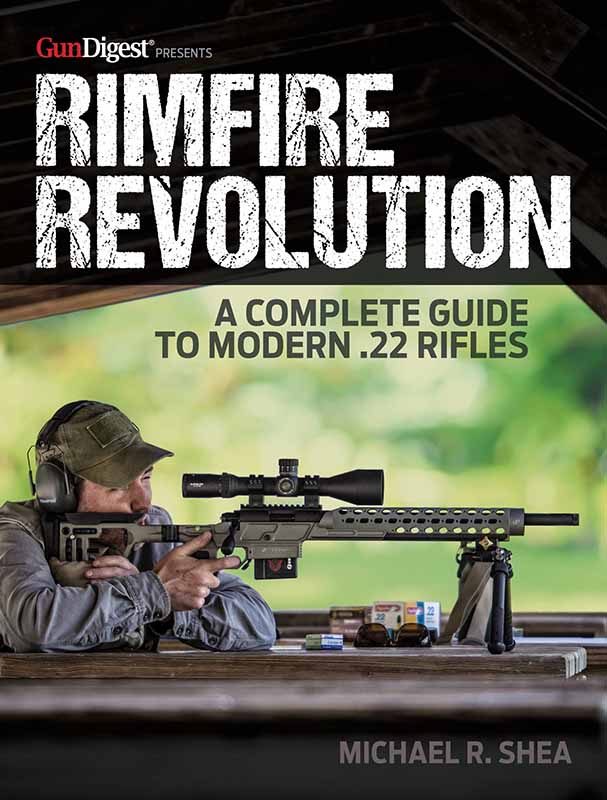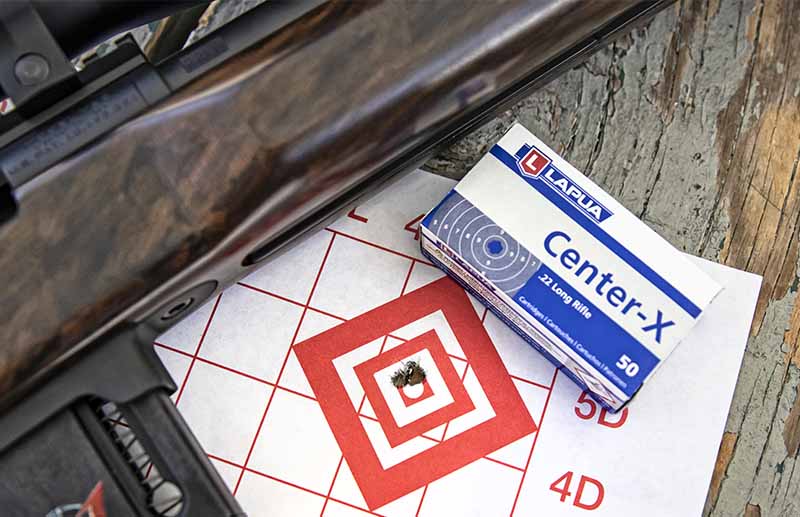
Barrel break-in is an important procedure to improve the accuracy of a centerfire rifle. Does a rimfire require the same? It depends …
The Basics Of Rimfire Barrel Break-In:
- Much depends on the rimfire cartridge being shot.
- Cartridges that shoot lead bullets, such as .22LR do not require a barrel break-in.
- Jacketed cartridges, such as .22 WMR do require barrel break-in the same as a centerfire.
- Also, it depends on if the rifle's barrel is rough or has been hand lapped.

Breaking in a rifle barrel through a routine of shooting, then cleaning, then shooting some more is either a required step for a precision rimfire rifle system or not necessary at all, depending with whom you talk.
The more accurate answer to rimfire barrel break-in is, “it depends.”
First, consider the caliber. A .22 LR shooting lead bullets may require a different process than a .17 HMR or .22 WMR that shoots jacketed bullets. Lilja Rifles, Inc., no stranger to precision shooting, says, “Rimfire rifle barrels are different from centerfire barrels in that they require minimal cleaning and essentially no break-in procedure.” Then they go on to state, “The .22 WMR and .17 HMR cartridges are rimfires, but they fire a jacketed bullet and therefore centerfire cleaning, and break-in instructions apply.”

An important note here, Lilja barrels — and Shilen, Muller, Bartlein, and other premium makers — are hand-lapped to a mirror polish. That means they remove any tooling marks left in the bore from the barrel-making process. That is not the case with factory barrels. With a borescope, you can see plain as day little ridges and nicks in many factory barrels. Those imperfections can be made smoother after shooting lead .22 LRs down the bore, as imperfections fill in with lead and lube, which slicks up the bore and makes for better groups. That is why so many factory rimfires seem to shoot better after many hundreds of rounds and why so many rimfire shooters seem allergic to ever cleaning their bores. However, there are downsides to an always dirty barrel.
It seems a factory or rough barrel can be broken in by shooting it a lot, whereas a hand-lapped barrel does not require this. Likewise, a hand-lapped premium barrel can be kept cleaner for longevity’s sake, as it only takes half a box of ammo or less to “re-foul” the bore and for accurate shooting. In both cases, it is not as necessary to shoot, clean, shoot, clean using some prescribed protocol as it is for barrels that send copper-jacketed bullets downrange.
Editor's Note:This article is an excerpt from Rimfire Revolution: A Complete Guide to Modern .22 Rifles, available at GunDigestStore.com.
More Rimfire Info:
- Best .22 Ammo For Every Application
- The .22 LR: Mini, Mighty And Many
- The .22 LR And Its .22 Rimfire Cousins
- Cartridge Debate: .17 HMR vs. .17 WSM
- Ammo: Evolution of the Red-Hot .17 HMR
- The .22 LR For Self Defense: Good, Bad Or Crazy?

Next Step: Get your FREE Printable Target Pack
Enhance your shooting precision with our 62 MOA Targets, perfect for rifles and handguns. Crafted in collaboration with Storm Tactical for accuracy and versatility.
Subscribe to the Gun Digest email newsletter and get your downloadable target pack sent straight to your inbox. Stay updated with the latest firearms info in the industry.

![Best Concealed Carry Guns In 2025 [Field Tested] Wilson Combat EDC X9S 1](https://gundigest.com/wp-content/uploads/Wilson-Combat-EDC-X9S-1-324x160.jpg)


![Best 9mm Carbine: Affordable PCCs [Tested] Ruger Carbine Shooting](https://gundigest.com/wp-content/uploads/Ruger-Carbine-Shooting-100x70.jpg)
![Best AR-15: Top Options Available Today [Field Tested] Harrington and Richardson PSA XM177E2 feature](https://gundigest.com/wp-content/uploads/Harrington-and-Richardson-PSA-XM177E2-feature-100x70.jpg)
